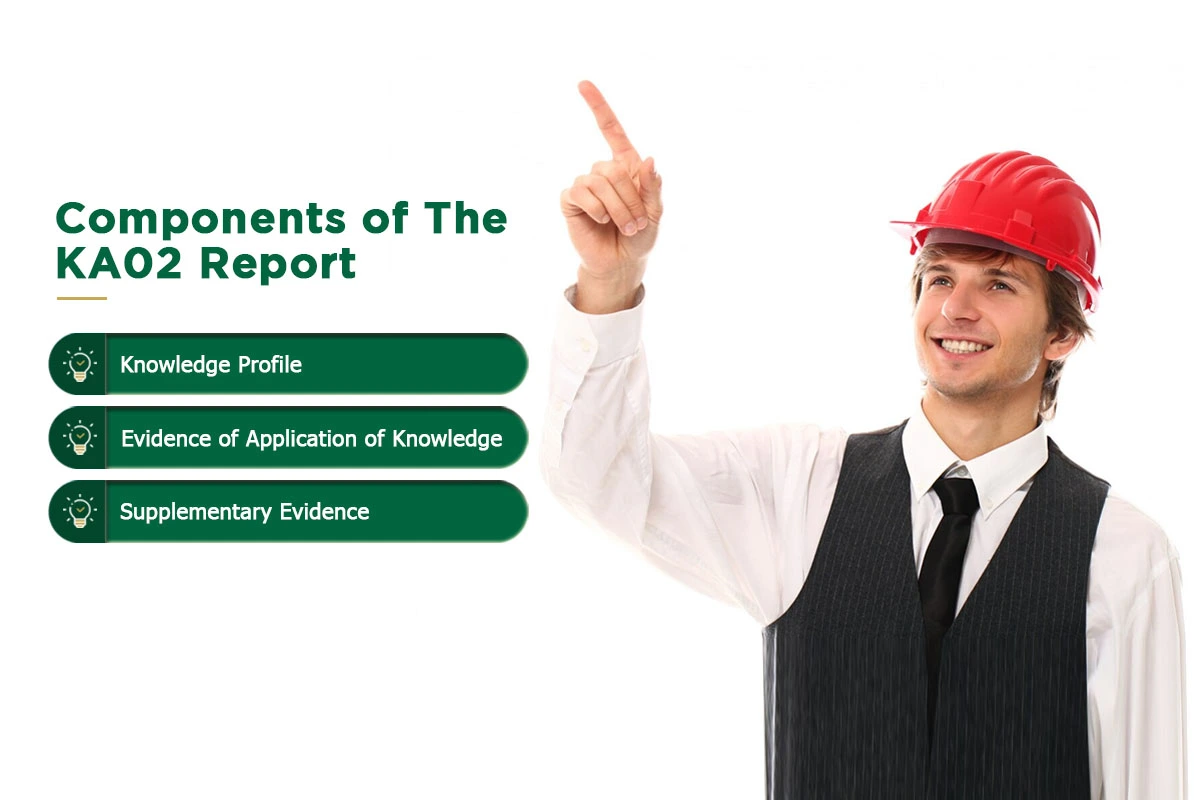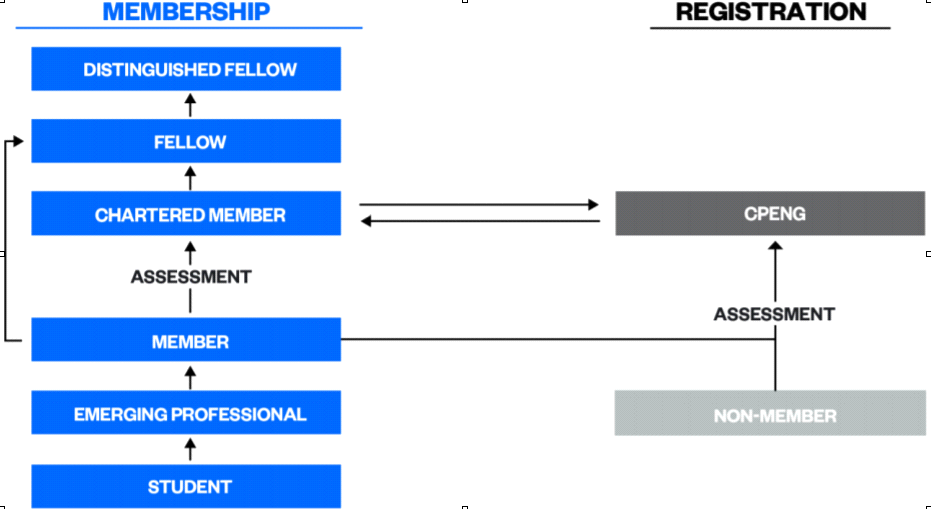

An experienced engineer with a professional registry from the Engineering New Zealand as the registration authority is a Chartered Professional Engineer. An assessment of your specialist knowledge is to be undertaken like all Chartered Member class, which is testimonial to your skills of handling complex engineering problems. A reassessment every six years and a stress on technical experience which is specific to New Zealand is the point of difference here. Moreover, overseas work permit is also guaranteed as the CPEng assessment highlights presence of skills required at international level.
There is basic line of difference between registering and becoming a member. Undertaking the same assessment would allow you to obtain the position of both a Chartered Member of Engineering New Zealand and a Chartered Professional Engineer. A strict demonstration of credibility and professionalism is vital as a member of Engineering New Zealand. Here the stress is on exuding the fact that being a part of a broader professional community maintaining standards, raising the bar and advancing technical knowledge continuously is of high essence. A continual support throughout the career and access to member resources also lures CPEng to become members of Engineering New Zealand.
A change in regulatory criteria of engineering has been signalled by the government. An implication is being provided that engineers across all engineering disciplines and undertaking safety-critical work are set to see new occupational licensing regime across all disciplines. Streamlining of future licensing application can be possible by understanding the chartered assessment process. A need to be licensed in future also requires going through the assessment process in present.
To become a Chartered Professional Engineer, you must:
NB: It is not mandatory to have certification in Engineering New Zealand for applying to this process.
Application through our member area online is permissible for all candidates to be a Chartered Professional Engineer. Predetermined access will be provided to the members of Engineering New Zealand. In case of non-members, joining options are also provided. Contact us for not wanting to be a member.
Your application needs to include:
A draft application will be asked for and reviewed by a member of our assessment team, before the submission of the final application. A greater degree of success is guaranteed as a consequence of this review process, making it a necessary step.
After you've submitted your application online, a panel of your peers will:
As a member of Engineering New Zealand and a working engineer, there are higher chances of you being able to highlight your competence and ethics and the knowledge that you possess. Providing testimony to peers, employers and community is made easy as a result of the competence-based registration and membership process. It helps in ensuring that you are marked as a trusted professional and expert in the practice area. International educational standards, competence and ethical values are the benchmarks of assessment of an individual for becoming a Chartered member of Engineering New Zealand. On acquiring or showcasing the meeting of set standards, an individual is set to join an elite group of engineering professionals. A choice among four competence-assessed memberships is available for you:
An optional joining into the Chartered Professional Engineer (CPEng) national register is also available for you. The International Registered Professional Engineer (IntPE(NZ)) and International Engineering Technologist (IntET(NZ)) are assessed against the same standards, which can be applied for once you become a Chartered Professional Engineer and/or a Chartered Member, which are equivalent international standards. An additional option of opting for a Design Verifier (for pressure equipment, cranes and passenger ropeways) is also available for a Chartered Professional Engineer.
A demonstration of your independent practice competence against stipulated standards is essential aspect of the assessment process, which is the same for first-time competence-based membership and CPEng. A Knowledge Assessment is the preliminary part, in case of lack of relevant accredited qualification.
AN ADVANCEMENT OF YOUR CAREER IS GUARANTEED BY A CHARTERED MEMBERSHIP AND CPENG REGISTRATION
An enhancement in your professional standing is facilitated by taking the next step to getting professional recognition of the skills, competencies and the knowledge that you possess. A general quality mark competence alongside all the perks of a member of Engineering New Zealand is facilitated by the acquisition of a Chartered membership. A per annum commitment to ongoing professional and ethical developments is necessitated to get chartered membership.

FIND THE RIGHT CLASS OF RECOGNITION FOR YOU
Varying levels of complexity and benchmarking to an internationally-recognised qualification standard Washington, Sydney or Dublin Accord are the characteristic features of each class of recognition.
The candidates who are willing to be assessed, for them a Washington Accord-accredited qualification (four year BE (Hons) in New Zealand) is mandatory for CPEng and/or Chartered Member or IntPE(NZ). An equivalent level of knowledge can be highlighted to testify the same here. A showcase of competencies highlighting the ability to deal with complex engineering problems and facilitate complex engineering activities is a mandatory aspect here. As a Chartered Member (Engineering Technologist) wanting an assessment for Chartered Member (Engineering Technologist) or IntET, a Sydney Accord-accredited qualification (three-year BEngTech degree in New Zealand) or equivalent knowledge demonstration is a must. Carrying out broadly-defined engineering activities and dealing with the broadly-defined engineering problems is a necessity for this.
Chartered Member (Engineering Technician) who wants to be assessed for Chartered Member (Engineering Technician), has to have a Dublin Accord accredited qualification (two-year NZDE in New Zealand) or equivalent levels of knowledge. Dealing with well-defined problems of engineering and undertaking well-defined activities of engineering are mandatory in this case.
Chartered Member (Engineering Geologist) wanting to be assessed for Chartered Member (Engineering Geologist), are required to showcase close work relationship maintenance with geotechnical engineers and simultaneously ability to reliably predict the nature of the ground. A honours level degree in geology and a post-graduate qualification in engineering geology is a need here, or being able to demonstrate something equivalent. You must show your abilities for dealing with complex engineering geological problems and activities that requires specialist help and in-depth knowledge of geological engineering.
The overall criteria within the four competence groupings are the basis of assessment of the information you supply in your Work and Learning Records, when you're applying for Chartered Membership. An undertaking of engineering work of a particular complexity level is needed to be demonstrated by you. This is different depending on whether you're applying for CPEng or one of our Chartered Memberships.
Assessment criteria may differ based on the level of complexity and overall standard. They can be demonstrated with the help of four competence areas.
Without specifically referencing the work records that you possess, you are required to write a statement of about 500 words. The choice of four to six Work Records are required to be linked as per your selection in the fifth section, Work Items. The reference to which group these are evidencing and the reason for selection is required to be shown here. You should present a selection of two to three work files for each of these Work Records to the assessment panel to testify that you have met all the requirements.
What's the difference between Chartered Membership and Chartered Professional Engineer registration (CPEng)?
The members of Engineering New Zealand, Chartered Members are bound to enjoy all the benefits associated with the society. The difference of CPEng lies in the fact that it is not a membership but a registration under the CPEng Act 2002. A demonstration of the competence to manage complex engineering problems and activities is an essentially essential for candidates applying for CPEng. There are additional categories for recognition of engineering technologists, engineering geologists and engineering technicians seeking Chartered Membership. Similar assessments are mandatory for both. An evidence of New Zealand-specific good practice and a reassessment of the same after at least 6 years is an essential difference in the competence standards for both, which is otherwise the same. Chartered membership provides a direct entry for engineers who have been assessed in an equivalent overseas jurisdiction, e.g. CEng (UK) or CPEng (Australia). A need to stay current means there is a need for continuous development, which makes Chartered Membership not reassess able. The same ethical code of conduct and similar disciplinary process is associated with both CPEng and Chartered Membership.
